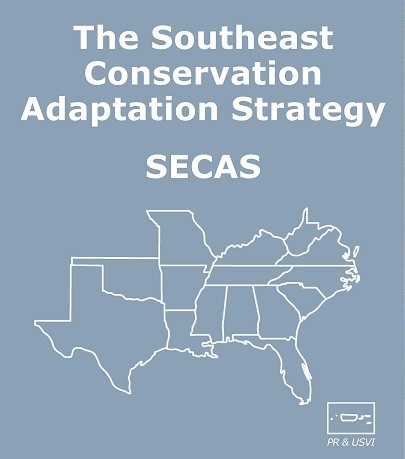This is Mallory Martin, SECAS Coordinator, signing off

This is my last blog post as your SECAS Coordinator; I’ll be happily sailing off into retirement by the time many of you read this. So, it’s an appropriate time for reflection on the past and anticipation for the future, not only for me but also for the SECAS partnership.
While there’s a lot about SECAS to reflect on, and I could never recount all the conservation triumphs of SECAS since its inception in 2011, I’ll mention two recent accomplishments that I think set the stage for continued relevance to advance landscape conservation in the Southeast in 2022 and beyond.
I feel that one of the most significant accomplishments for SECAS was the completion last year of a holistic review of the partnership and its delivery of conservation value known affectionately as the “SECAS Futures Project.” The project revealed important ways that SECAS helps drive conservation and outlined a number of steps to sustain the partnership, enhance its relevance, and increase accomplishments in the future. As a reminder, a summary blog about the project is available here and the final report is available here.
Another recent and significant accomplishment comes from the SECAS Symposium on America the Beautiful – 30x30 that was held in October at the Southeastern Association of Fish and Wildlife Agencies annual conference. That symposium was the first comprehensive conversation on the America the Beautiful campaign in the Southeast, involved diverse representation from national, regional, and local levels, and used a facilitated discussion to identify and reaffirm current and future directions for SECAS and conservation in the Southeast. The conservation themes that emerged from the symposium provide specific direction for SECAS to take advantage of the momentum around America the Beautiful and contribute to further conservation accomplishment in the Southeast. For a refresher of the details emerging from the symposium, check my blog from October.
Additional reflection on what SECAS is and how the partnership advances conservation is available in this fantastic three-page case study that Hilary prepared to outline where we’ve been and where SECAS can go in the future. These examples and the overview establish a great opportunity for SECAS to expand its engagement and relevance even more significantly in the coming years. I’m excited for the future of SECAS and its importance for conservation in the Southeast!
That’s all for now, and I thank all of you for your support and interest in SECAS and what this partnership can do for conservation, now and in the future. All the best!
-Mallory